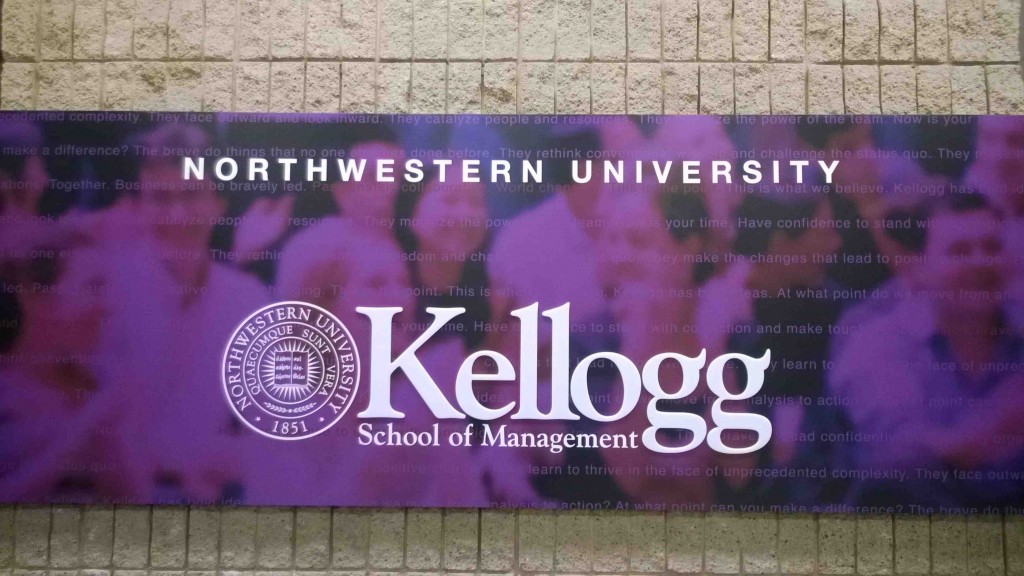Now Kellogg has finished, and the I2C Fellows have left I am putting my spare time and energies after work into organising the Business Essentials for Scientists (BES) 2014 course held by Åbo Akademi University in Finland. This course started in 2011 with the first “pioneers” of this Kellogg & Northwestern Program, my former colleague Emilia Peuhu and another PhD student, Anders Björkbom. It was them and their experience here that made me decide that I was going to do whatever it took to get to be a part of this. Fast forward a few more years than I would like and I am on this side of things.
I took the first BES course in 2011. It was great, We had speakers from start-ups, some fresh out of the Boost Startup Farm, including WalkBase who have done very well since. We had seasoned speakers who had spent many years in industry and some academic entrepreneurs. We had some academic teaching, not as much as I would have liked then, But I recognise that I am probably slightly unusual for wanting more lectures and courses. However, the course was inspiring and we had a great opportunity to interact with people that we would never ever come across in our day to day lives as PhD students. We also got a fresh, non-academic view on how life works outside of university. Some of the guest speakers were not afraid to speak openly about their opinions and the reasons for why they made their choices. It meant we got some conflicting advice, but when you think about it that’s the reality of life. We make our choices with respect to the circumstances at the time.
As I have been trying to find speakers for this year’s course, look up some of those who have been with us for the last few BES courses and find some new faces and stories, I have been forced to reflect on what I have done over the last few years and what inspired me to seek out additional business-orientated education.
I think maybe the turning point for me was reading articles on NatureJobs site which described a poor job market for PhD graduates. This was back in 2009 when a career outside academia was an “alternative career”. Where students worried that they couldn’t tell their supervisor that they didn’t want to stay in academia for fear of repercussions. Nowadays, academia is the alternative. I realised any “real world” experience that I had work-wise was fast losing value with each year that my PhD took. Working since I was 16 in various customer service jobs, from selling outdoor clothing, bar work, telesales of various kinds, would cease to mean anything. If you graduate in your late 20’s or early 30’s, no one is going to care about what you did when you were 18. Even if it means you didn’t just stay solely in education, and can talk to normal people.
I figured I needed to find another way to make myself stand out from what was evidently going to be an increasing number of bright PhD’s looking for work in industry. Given the non-existent internship opportunities. I decided to take advantage of the freedom of taking university courses for free while I could. So, I browsed through the courses in English at Åbo Akademi and took a variety of classes, and even did a couple of MOOCs (massive open online courses). Always aiming to find something that sounded interesting that would also help me broaden my knowledge, I’m lucky my supervisor was supportive, although I tried not to let it get in the way of my research. I raised money to go on the BioBusiness Summer School in Amsterdam, where we had a very similar but more developed experience to the BES course. We had many speakers from different aspects of the Pharma, Biotech and Medical Devices sectors come and talk to us frankly about their careers, how their company has evolved, and different aspects of BioBusiness.
So what does this mean for the next BES participants? Well, classroom learning is all well and good. But for me the most rewarding learning experiences have been getting hands experience in MOOCs, such as the Technology Entrepreneurship course run by Stanford University. As well as getting the chance to interact with people who have had wealth of life and business experience. It’s all very well to be taught something, but to see how it has been applied is more valuable. I hope to find a balance between academic learning and interactive sessions with entrepreneurs and business people. I’m not promising miracles but I am hoping that some part of this year’s course will inspire each of the participants in some way.

